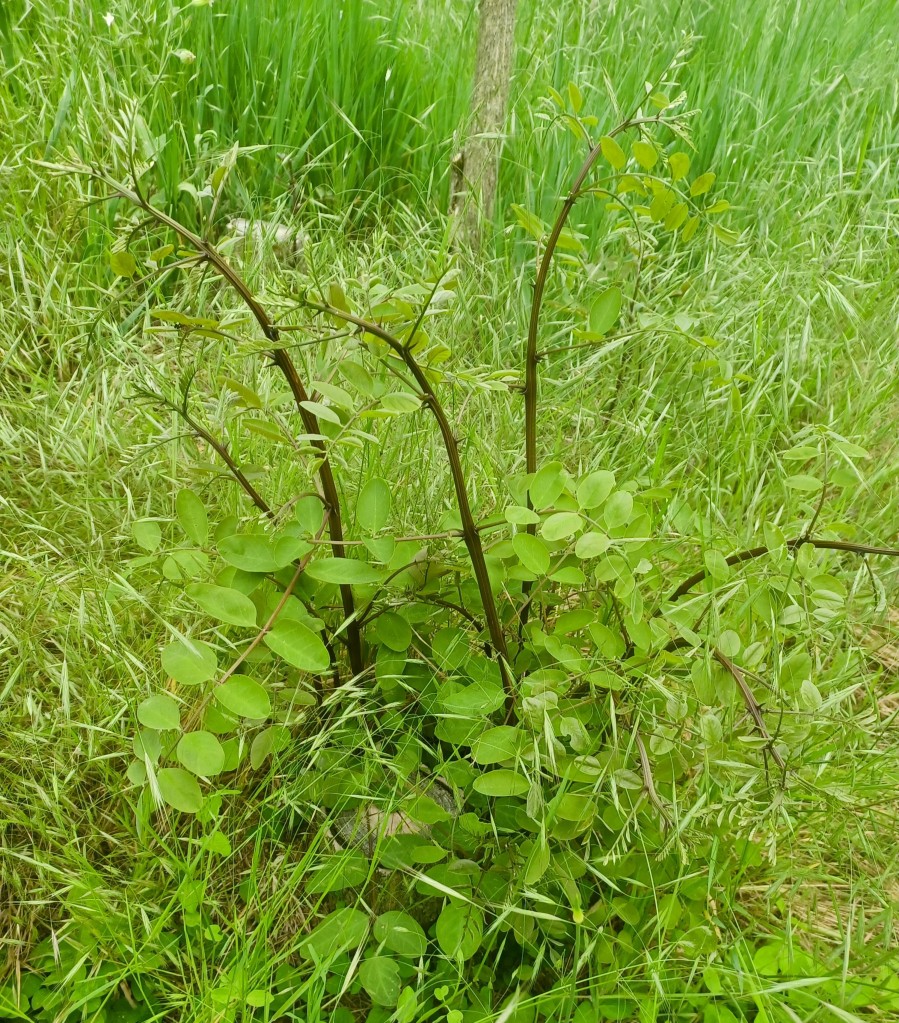
Disclaimer: Outside of its native range (in and around the Appalachian Mountain range in Eastern North America) Black Locust – Robinia Pseudoacacia – can become invasive. It is a pioneer species meant to recolonize disturbed ground and compete with grass. If you are outside of its native range please proceed with caution with this species, or consider using a species native to your area that fills the same niche.
Black Locust Coppicing – Part 1, Part 2, … Part 4, Part 5
It is now mid-May and the sprouts on the stumps are clearly visible, some of them are even a couple feet tall already. Unfortunately, I failed to find a few stumps as they are currently lost in a poison ivy tangle that I am not going to wade into. Photos cannot really show all the sprouts on each stump very well, so I have taken a few representative snaps and the data will be solely numbers.
Data will follow under the pictures:


| Tree ID | Diameter of trunk | Age of stem (years) | # Sprouts Mid-May 1st year post-coppice |
| A1 | 2.25″ | 9 | 8 |
| A2 | 4″ | 11 | 5 |
| A3 | 2.25″ | 9 | 3 |
| A4 | 4.25″ | 10 | 11 |
| A5 | 3.25″ | 10 | 3 |
| A6 | 4.5″ | 11 | 7 |
| A7 | 3″ | 11 | 5 |
| A8 | 4″ | 12 | 8 |
| A9 | 3″ | 9 | 3 |
| A10 | 3.25″ | 9 | 7 |
| A11 | 3.25″ | 8 | 4 |
| A12 | 2.5″ | 9 | 3 |
| A13 | 2.5″ | 10 | lost in poison ivy |
| A14 | 2.75″ | 9 | lost in poison ivy |
| A15A | 2.25″ | 9 | 3 |
| A15B | 2.25″ | 9 | 5 |
| A16 | 3.5″ | 9 | 4 |
| A17 | 2.5″ | 9 | 4 |
| A18 | 2.5″ | 8 | lost in poison ivy |
| A19 | 2.25″ | 9 | lost in poison ivy |
| Average: | 3″ diameter | 9.5 years | 5 sprouts per coppiced stem |
Although I have not run formal statistical diagnostics on this data, it appears that stem diameter and age do not have much correlation with how many sprouts there are on any given trunk. I will be thinning down to approximately 3 stems per trunk during summer sometime, and in the fall after leaves are off I will measure height and diameter of the first year’s growth. I would expect there to be some correlation with trunk diameter and age of stem in one or both of these data points.


Pingback: Black Locust Coppicing, Part 2 | Anonymous Appalachian Agrarian
Pingback: Black Locust Coppicing, Part 4 | Anonymous Appalachian Agrarian
Pingback: Black Locust Coppicing, Part 5 | Anonymous Appalachian Agrarian
Pingback: Black Locust Coppicing, Part 1 | Anonymous Appalachian Agrarian